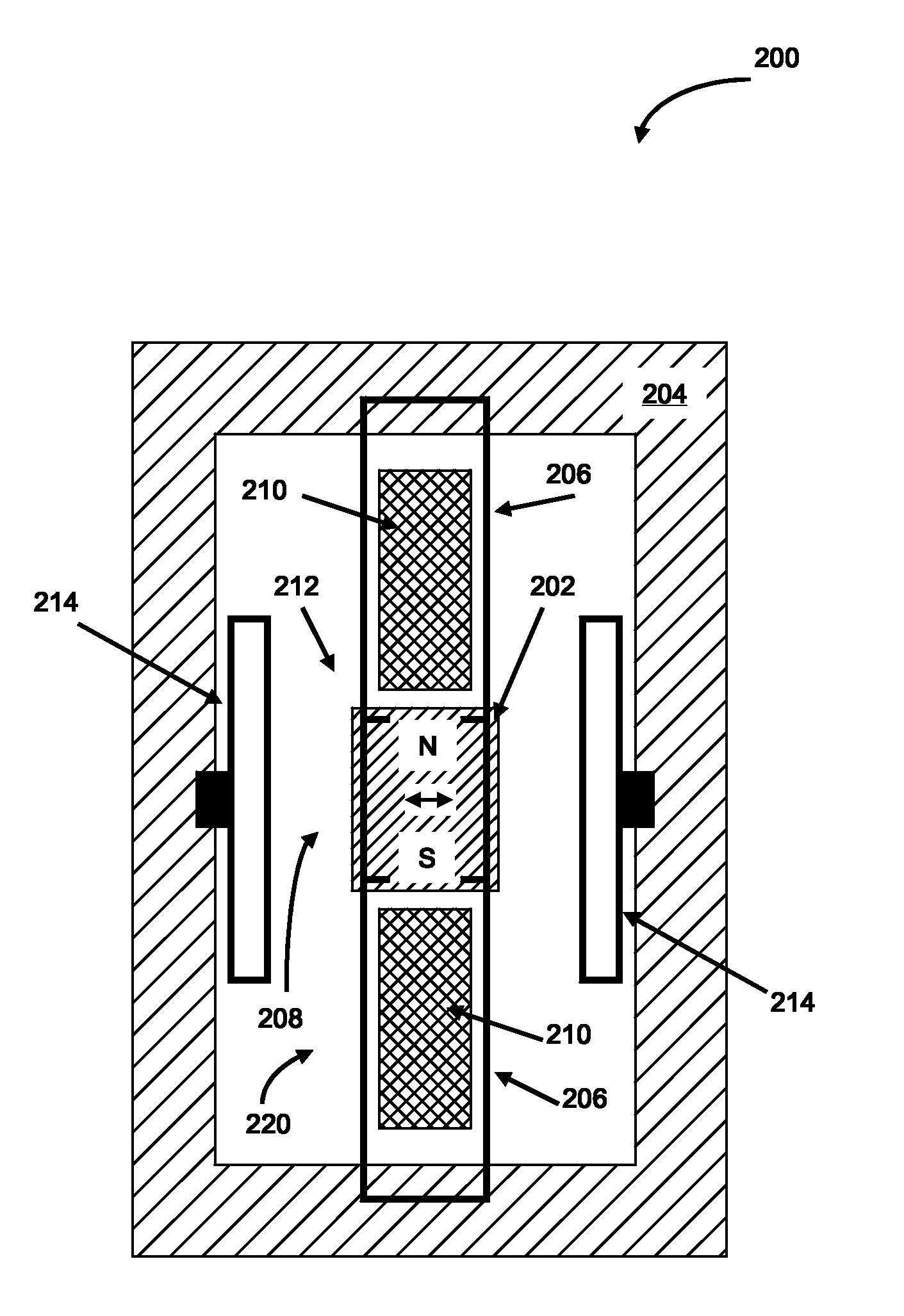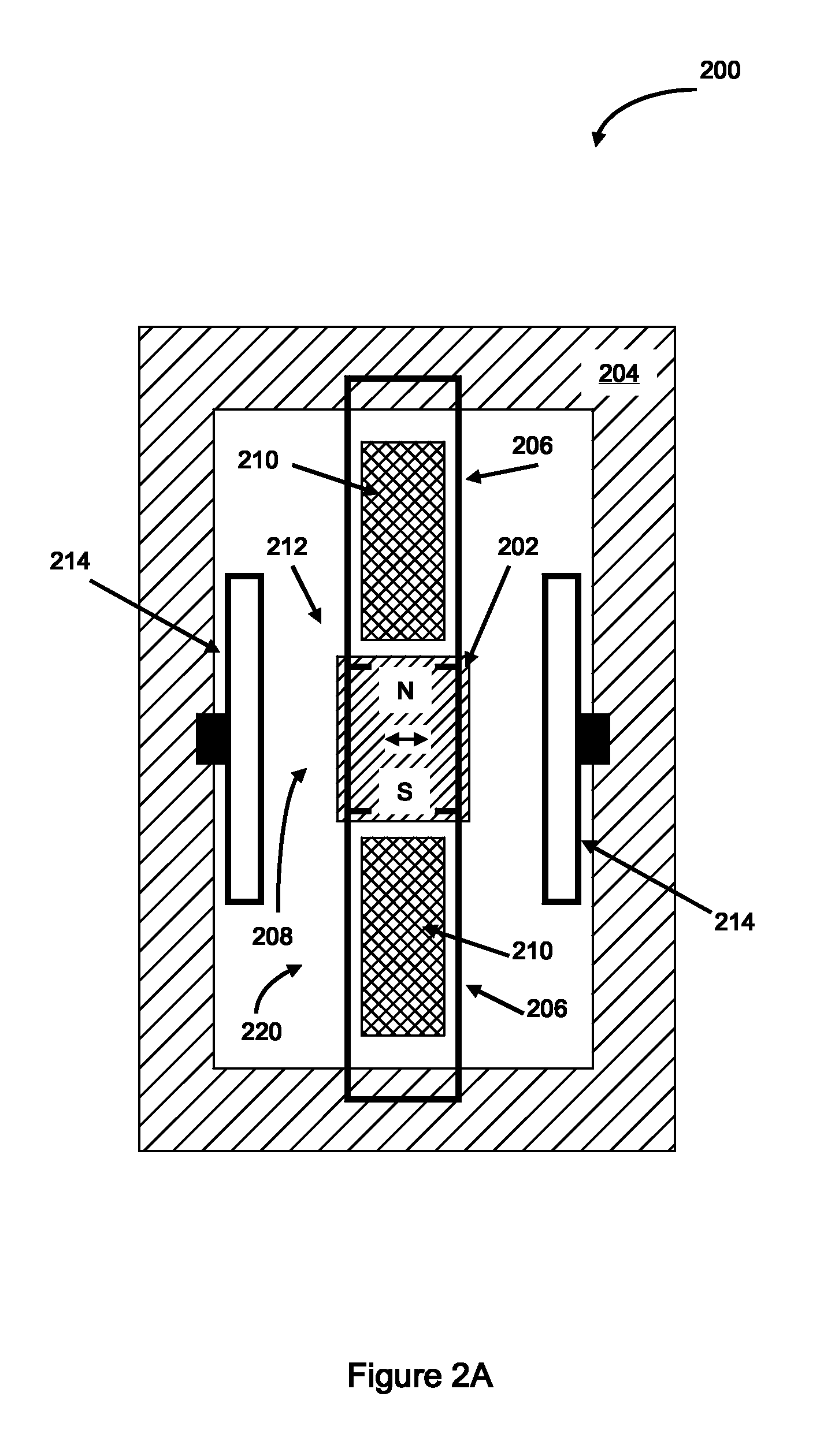Mechanical vibration to electrical energy converter
a technology of electrical energy converter and mechanical vibration, which is applied in the direction of dynamo-electric components, dynamo-electric machines, electrical apparatus, etc., can solve the problems of energy densities and lifetimes still being issues for many systems, and the battery may have been depleted already,
- Summary
- Abstract
- Description
- Claims
- Application Information
AI Technical Summary
Problems solved by technology
Method used
Image
Examples
second embodiment
[0036]FIG. 2A is a schematic plan view illustration of an apparatus 200 for converting mechanical vibrations into electrical energy, according to the present invention. A magnet 202 is connected to a frame 204 by a coupling206 which serves to align and guide the magnet 202 disposed within a gap 208 in a ferromagnetic circuit 220. The north “N” and south “S” poles of the magnet 202 are aligned with the pickup portions 210 of the ferromagnetic circuit 220. In this particular embodiment, the ferromagnetic circuit 220 (e.g. yoke, core and pickups) is arranged perpendicular (i.e. extends into and out of the plane of the illustration) to the plane defined by the frame 204. An electrically conductive coil (not shown) can be wrapped around the core, lying above (or below) the plane of the illustration. Coupling 206 is illustrated as a structure comprising flexible, “springs” which serve to allow motion of the magnet 202 to occur substantially in the Z-direction as indicated by the double ar...
third embodiment
[0042]FIG. 3 is a schematic plan view illustration of an apparatus 300 for converting mechanical vibrations into electrical energy, according to the present invention. In this embodiment, the ferromagnetic circuit 330 comprises one or more arms, e.g. 320 and 322, wherein each arm can have an electrically conductive coil 324 and 326 wrapped around the core portion of the corresponding arm of the ferromagnetic circuit 330. It can also be convenient to arrange the arms 320 and 322 in the planar configuration shown, to reduce the overall “height” or volume of the apparatus 300. The remaining elements, magnet 302, coupling 306, frame 304, gap 308, restrainer 314 and their function, are as described above. In the illustrated configuration, the motion of the magnet 302 can be constrained to occur substantially in the plane defined by ferromagnetic circuit 330.
[0043]The following exemplary embodiment of a “Hi-μr Core” VDRG comprises MEM components arranged in a single-magnet, single-core co...
PUM
 Login to View More
Login to View More Abstract
Description
Claims
Application Information
 Login to View More
Login to View More - R&D
- Intellectual Property
- Life Sciences
- Materials
- Tech Scout
- Unparalleled Data Quality
- Higher Quality Content
- 60% Fewer Hallucinations
Browse by: Latest US Patents, China's latest patents, Technical Efficacy Thesaurus, Application Domain, Technology Topic, Popular Technical Reports.
© 2025 PatSnap. All rights reserved.Legal|Privacy policy|Modern Slavery Act Transparency Statement|Sitemap|About US| Contact US: help@patsnap.com



